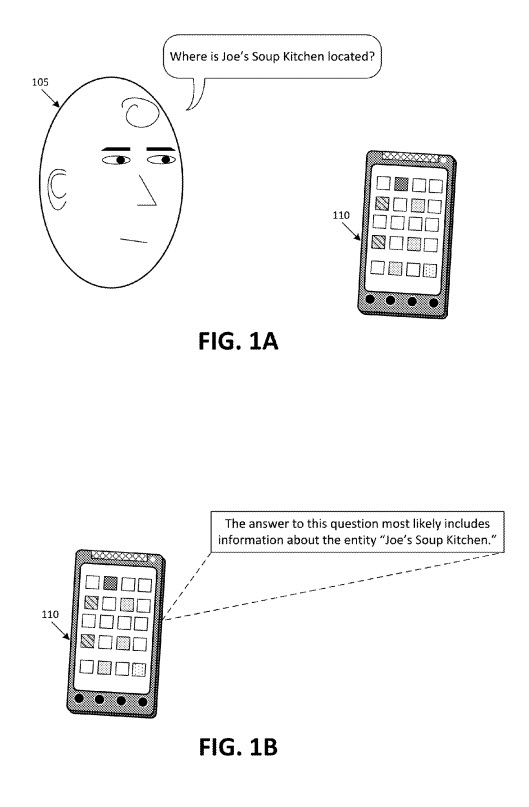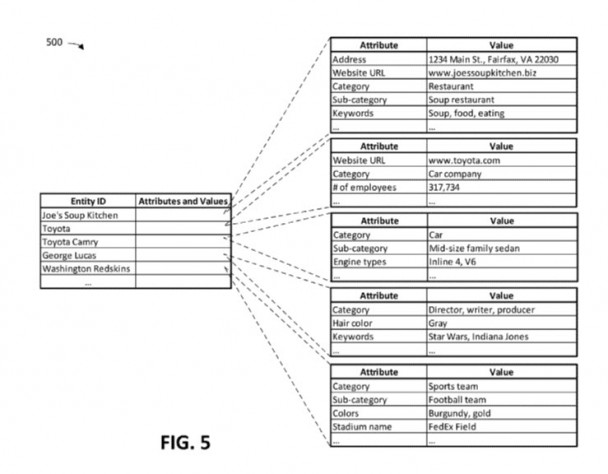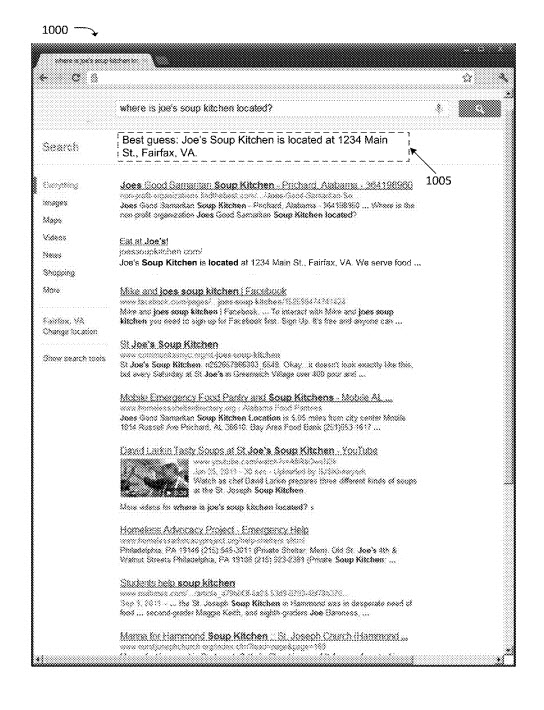Table of Contents
We learned Google’s name for Answer Box results was Featured Snippets. These Direct Answer results answer entity triggering questions from searchers, including information about entities, such as people, businesses, geographic locations. For Google to answer questions about entities, it must have information about the entity that a query is about, so that it can be responsive.
Related Content:
Answering Questions About Specific Entities
A Google patent granted this week, addresses how Google may answer Entity triggering questions. The steps that it may follow involve:
- Determining that queries are entity-triggering questions, based on one or more terms within the questions
- If an entity-triggering question: the search engine will attempt to display a search result that responds to the question,
- It will find the associated entity or entities from at least one document in the search result and take the question, and provide an answer to the question referencing one or more attributes of the entity.
Scoring Entities
The selection of an entity and an answer to the question may be chosen based upon a scoring process.
The scoring for an entity would be based on information made up of:
- A quantity of search results in which the entity was identified
- A proportion of search results in which the entity was identified
- Identifying identifiers for the entity in snippets associated with search results
- A result score associated with a search result in which the entity was identified
- The number of times that an identifier appears in a particular search result
- Whether the entity matches one or more terms for the question, and
- Detecting that a particular search result is spam.
There are some challenges when trying to find this information, that can happen involving an:
Entity identifier – identical or very similar – Determining whether an entity from documents in the search results set and in the question may be easier if one or more terms of an entity identifier, associated with the entity, are identical or satisfies a similarity threshold to one or more terms of the question.
Entity Attributes – identical or very similar – Identifying that an entity is associated with documents in the search results and the query may be easier if one or more terms of an entity attribute value that is associated with the entity, are identical or satisfies a similarity threshold to one or more terms of the question.
Terms Associated with Entity Triggering Questions – Based upon whether questions with one or more terms associated with questions likely to be entity-triggering questions, or determining that questions do not include such terms.
Following one of the approaches above makes it more likely that entities chosen are associated with entity-triggering questions. If so, then this search system can generate and output answers that are associated with these entities, and provide relevant and useful responses to users’ questions.
The patent is:
Using an entity database to answer entity-triggering questions
Inventors: Melissa K. Carroll, and John J. Lee
Assigned to: Google
US Patent 9,081,814
Granted July 14, 2015
Filed: March 12, 2013
Abstract
An embodiment may receive a question at a computing device; obtain a search result set in response to the question; identify, using the computing device, one or more entities that are associated with at least one document referenced by the search result set; select, using the computing device, one or more relevant entities identified as being associated with (i) documents referenced by the search result set and (ii) the question; and output, using the computing device, an answer to the question based at least on the selected one or more entities.
An Entity Triggering Query May include Entity Identifiers
Searches may identify entity-triggering queries.
An entity-triggering query could include a query that responds includes an entity identifier. Entity Identifiers could include:
- The name of an entity
- Examples of information that may identify an entity could include a person, a business, a geographical location, a movie, a song, etc.; a physical address; a telephone number; an email address; a date; or any other type of information regarding an entity.
- The goal of an entity triggering query may also receive a search response providing an entity identifier for a relevant entity.
- An entity-triggering query may include a query to which response includes information regarding an attribute of an entity. Attributes of a person entity may include information such as date of birth, an e-mail address, a telephone number, hair color, favorite movie, and/or any other information about the person. Attributes of a business entity may include a physical address, a category, a telephone number, and/or any other information about the business. The goal of such a query is to receive a response providing information about relevant attributes for the appropriate entity.
Examples of Entity-Triggering Questions
“Where is Joe’s Soup Kitchen located?”
An answer to this question may include information associated with the entity “Joe’s Soup Kitchen”– that makes it an entity-triggering question. The goal of the query is to determine the location attribute associated with the entity, “Joe’s Soup Kitchen.” It is considered an “entity-triggering question” because the entity needs to be identified before the question can be answered.
The answer to that query might be “Joe’s Soup Kitchen is located at 1234 Main St., Fairfax, VA,” which indicates a physical address associated with the entity “Joe’s Soup Kitchen.” The terms in the query “Where” and “located,” help indicate that the location is being asked for, and this responsiveness to the format of the query is important. of the query.
Document-Entity Associations
This system may crawl and index content found on pages and analyze documents and identify entities associated with those analyzed documents.
A document could be a web page about the best pizza restaurants in Chicago. The textual information and embedded information on the page may then be used to derive information about the pizza restaurants as entities and store information related to those entities.
This kind of document-entity association system could also store information that associates entities with attributes.
Document-Entity information may be stored in a Document repository, including information such as that storing information about location identifiers of documents, such as Uniform Resource Locators (“URLs”) and/or Uniform Resource Identifiers (“URIs”); content of documents; meta-data associated with documents; and/or any other information regarding documents.
That kind of information may also be stored in an Entity information repository. Entities could also include, for example, a person, a business, a geographical location, a movie, a song, a book, and/or any person, place, or object. An entity may be associated with an entity identifier, which may serve to identify the entity. For example, an entity identifier for a business entity may include the name of the business, an entity identifier for a person entity may include the name of the person, etc.
Entities are identifiable things that do exist, but entities could also be abstract things as well as physical things. An entity identifier is a name that provides a way of referring to an entity.
An entity may also be associated with a set of attributes, which may each be associated with a set of values. A person entity type may be associated with the following attributes: date of birth, e-mail address, and telephone number; while a business entity type may be associated with the following attributes: physical address, business category, and telephone number. Attributes are characteristics of entities that define the nature of the entity.
It does happen that different entities of the same type may be associated with different sets of attributes. For example, a person entity may be associated with the following attributes: date of birth and e-mail address; while another person entity may be associated with the following attributes: eye color and hair color. Thus, attributes define the entities in ways that characterize and help differentiate the entities.
Entity attributes may be associated with values. So, date of birth attribute may be associated with the value “October 21, 1982,” a hair color attribute may be associated with the value “black,” a physical address attribute may be associated with the value “1234 Main St., Fairfax, VA 22030,” etc. Certain values make only sense for certain attributes. Brown is a good attribute for hair color, but not a phone number.
Document-Entity Association Engine
This information that can be used to identify an entity, based upon attributes associated with it, maybe useful in identifying specific entities, and answering entity triggering questions.
Entity Identifiers
The data structure that contains information about entities may contain entity identifiers, like the names of those places, as well as values related to attributes associated with those entities. These can include domain names of sites, and categories, and addresses.
Take-Aways
This patent focuses upon providing answers to entity triggering questions, that are actual answers to those queries rather than a list of links that may contain answers to the queries.
As it shows, the ability to do this begins with recognizing an entity within a query, so that information related to that entity might be used to check upon whether or not the right entity is being considered for the answer, and that attributes related to the entity might then be used as an answer to the query.
Search News Straight To Your Inbox
*Required
Join thousands of marketers to get the best search news in under 5 minutes. Get resources, tips and more with The Splash newsletter:




